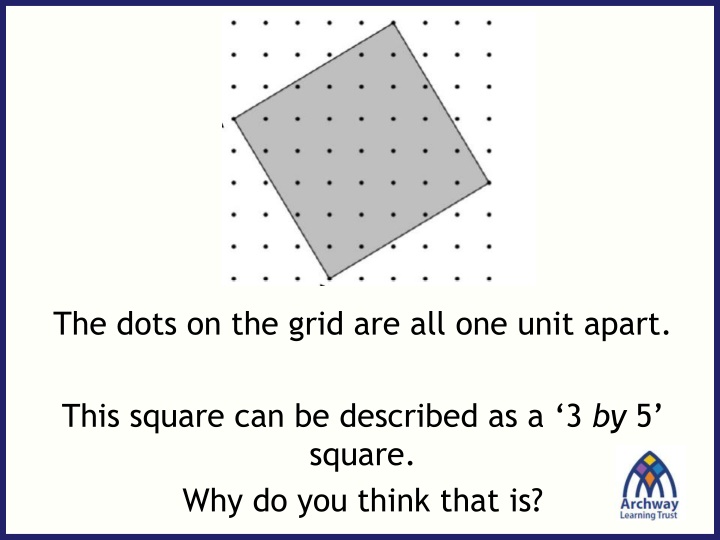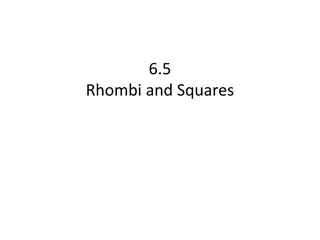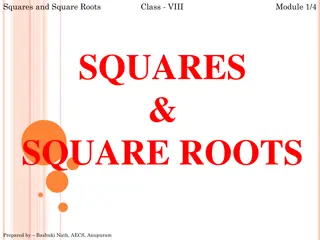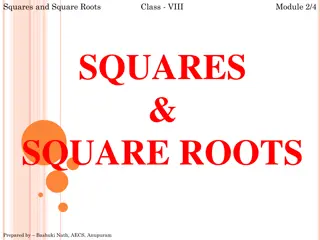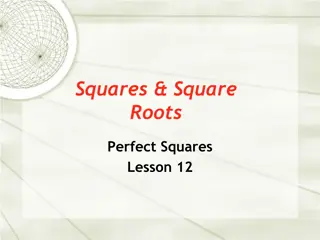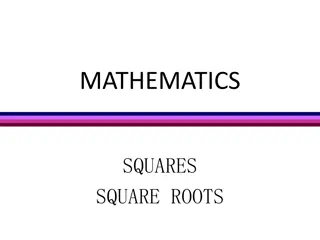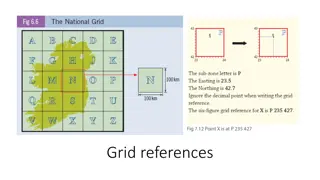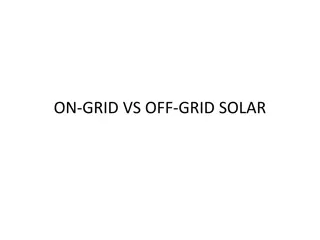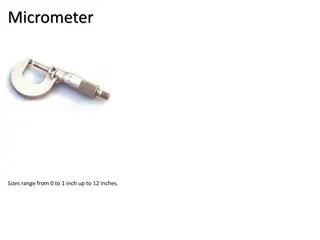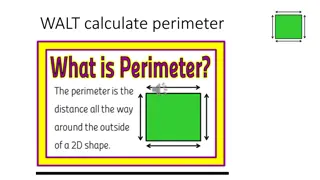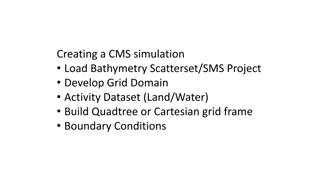Exploring Tilted Squares and Finding Areas on a Grid
Dive into the world of tilted squares on a grid and uncover methods to find their areas. Analyze different strategies by Jason, Kate, and Simon. Discover efficient ways to calculate areas of various tilted squares and observe intriguing patterns. Challenge yourself with calculating the area of a shaded square using newfound insights.
Download Presentation

Please find below an Image/Link to download the presentation.
The content on the website is provided AS IS for your information and personal use only. It may not be sold, licensed, or shared on other websites without obtaining consent from the author.If you encounter any issues during the download, it is possible that the publisher has removed the file from their server.
You are allowed to download the files provided on this website for personal or commercial use, subject to the condition that they are used lawfully. All files are the property of their respective owners.
The content on the website is provided AS IS for your information and personal use only. It may not be sold, licensed, or shared on other websites without obtaining consent from the author.
E N D
Presentation Transcript
The dots on the grid are all one unit apart. This square can be described as a 3 by 5 square. Why do you think that is?
The first number in the description always represents the horizontal tilt of the square. On your wallets Draw a 3 by 4 square
The first number in the description always represents the horizontal tilt of the square. On your wallets Draw a 2 by 3 square
How did you do it? How can you tell if it is accurate? How do these diagrams help?
In your pairs Can you find the area of your 2 by 3 square. Show all your reasoning.
Jasons Method Discuss Jason s method in your pairs. Do you agree?
Kates Method Discuss Kate s method in your pairs. Do you agree?
Simons Method Discuss Simon s method in your pairs. Do you agree?
In pairs, try to find an efficient way to calculate the areas of tilted squares. Draw different squares and use one or more of the methods to find the area of the tilted square Which different areas can you make by drawing squares on a grid?
Tilted Square Size Area 2 by 3 13 units2 Is there anything that you notice?
a b a b Use what you have learned from the tilted squares problem to find the area of this shaded square
Using Jasons method: Area of outside square = (a + b) x (a + b) = (a + b)(a + b) = a2 + 2ab + b2 Area of outside square a2 + 2ab + b2
Using Jasons method: Area of triangle = a x b 2 = ab 2 Area of all 4 triangles = 4 x ab 2 = 2ab Area of outside square a2 + 2ab + b2 Area of all triangles 2ab
Using Jasons method: Area of shaded square = a2 + 2ab + b2 - 2ab Area of shaded square = a2 + b2 What could we call the length of the shaded square? Area of outside square a2 + 2ab + b2 Area of all triangles 2ab
Using Jasons method: Area of shaded square = c x c = c2 Area of outside square a2 + 2ab + b2 Area of all triangles 2ab Area of inside square c2
Using Jasons method: Therefore: c2 = a2 + b2 Area of outside square a2 + 2ab + b2 Area of all triangles 2ab Area of inside square c2
c2 = a2 + b2 This is known as Pythagoras Theorem Next lesson we will be doing more to help us understand why it works
Challenge: Prove that the 2 shaded areas are the same size Show all of your reasoning
